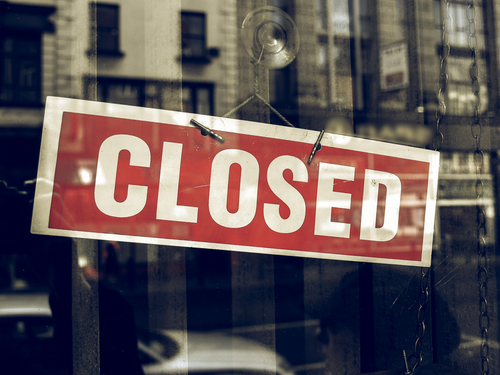
In a concerning trend escalating over the past few years, major US banks are continuing to close branches across the country. This move is leaving an increasing number of Americans without access to basic financial services, a development causing significant concern among consumers and lawmakers alike.
In the first week of October alone, Bank of America closed 21 branches, while Wells Fargo shuttered 15. Other banks, including US Bank and Chase, also reported closures, with nine and three branches closing respectively.
In total, 54 locations were either closed or scheduled to close between October 1 and October 7.
Whatcha think is going on here?
50+ Major US Banks are Closing their Doors 🤔
• Bank of America closes 21, Wells Fargo closes 15, US Bank closes 9 and Chase closes 3 are continuing to close banks
• In total, some 54 bank had closed or were scheduled to close across the US… pic.twitter.com/jYGBGEn0yg— UltraMJTruth (@MJTruthUltra) October 13, 2023
The impact of these closures is being felt nationwide, but certain areas are bearing the brunt more than others. For instance, eight of the 21 Bank of America closures were in California, while three were in Louisville, Kentucky.
This wave of closures comes despite increased revenues for some banks. Both Wells Fargo and JPMorgan Chase reported increased revenues in their third-quarter earnings, thanks to higher interest rates.
However, this financial success does not seem to be translating into sustained physical presence for these banks. A recent poll revealed 51 percent of consumers are very or somewhat concerned about the declining number of bank branches.
Only 18 percent said they were not at all concerned. The survey also found brick-and-mortar services are less accessible to black Americans, further exacerbating the issue of financial inclusion.
In case you forgot or didn't know, this is some of BLM's corporate donors:
-Bank of America: $18.5 BILLION.
– BlackRock: $810 million.
– Adidas: $120 million.
– Amazon: $169.5 million.
– American Express: $50 million.
– Apple: $100 million.
– IBM: $252 million.
– Kellogg: $91…— Phoeni𝕏 2A 🇺🇸 (@Phoenix2A_1980s) October 11, 2023
In response to these closures, Senator Sherrod Brown sent a letter to the Office of the Comptroller of the Currency (OCC) in March, calling for an inquiry into the impact of such closures on lower-income communities.
However, while the OCC acknowledges the importance of bank branches, it does not have the power to object to closures.
Data from S&P Global Market Intelligence shows that a total of 1,144 national and regional banks were closed between January 1 and July 31 across 49 states. This trend is not only leaving Americans without access to basic financial services, but also creating a zip code lottery when it comes to accessing a branch.
As major US banks continue to close branches, they are increasingly turning towards digital services. While this shift has been accelerated by the COVID-19 pandemic, it is clear that more needs to be done to ensure all Americans have access to financial services they need.











